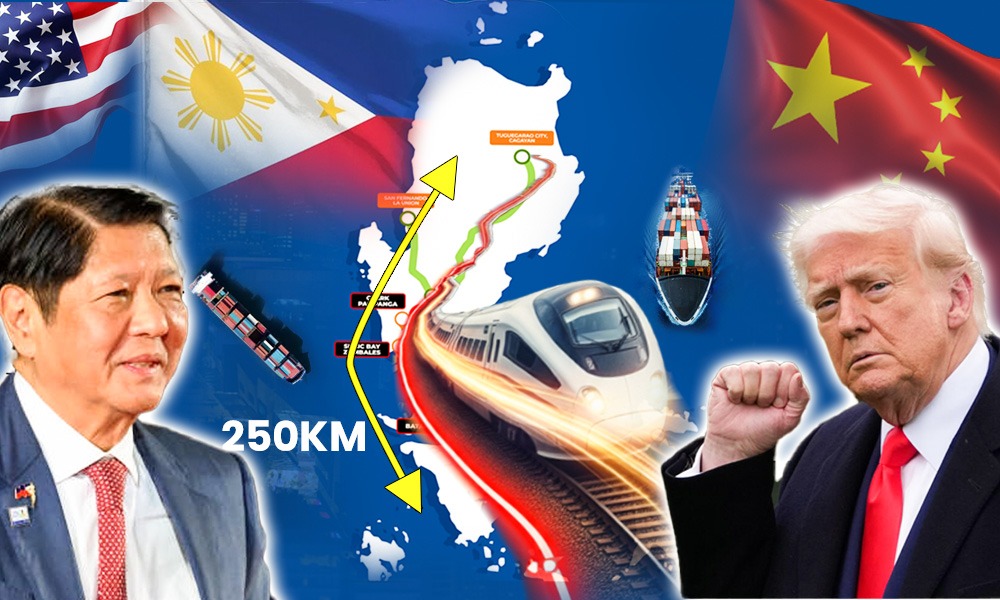Is the Philippines Becoming the Next Maritime Superpower? Just weeks ago, the U.S. rolled in its game-changing SELKIE USV, an AI-powered, 500-nautical-mile endurance drone boat, right onto Philippine shores at Subic Bay, with licensed co‑production already on the table. And barely a month earlier, American Special Forces were caught training with Devil Ray T‑38 drone boats in Balikatan off Subic and Batanes, sending a lightning‑fast signal of deepening defense synergy. Washington just greenlit a new base in Palawan to maintain these unmanned navals, reinforcing frontline deterrence against Beijing’s moves.
This isn’t mere military aid, it’s a strategic pivot, fortifying the Philippines’ defense autonomy, fueling its defense tech industry, and cementing a U.S. alliance with teeth. Are we witnessing the birth of a Filipino-built drone navy that could redefine Indo-Pacific geopolitics?
Background and Geopolitical Context
The South China Sea remains one of the world’s most volatile flashpoints, where overlapping territorial claims, particularly by China, challenge the sovereignty of several Southeast Asian nations, including the Philippines. Beijing’s expansive “nine-dash line” claim, combined with the militarization of artificial islands, aggressive maritime patrols, and harassment of Filipino vessels, has escalated tensions in recent years. In this contested environment, naval dominance and maritime situational awareness are not luxuries, they are existential necessities.
Given its archipelagic geography and long, vulnerable coastline, the Philippines’ security architecture relies heavily on maritime capability. Drone boats, agile, cost-effective, and AI-enabled, represent a revolutionary step in this direction, offering round-the-clock patrol, surveillance, and even swarm-based deterrence that traditional manned ships cannot match. They allow for rapid deployment, real-time response, and asymmetric defense in contested waters.
The Armed Forces of the Philippines (AFP) has been undergoing a long-overdue transformation under the Revised AFP Modernization Program (RA 10349). With limited defense budgets and rising threats, the need for modern, efficient, and scalable technologies has become urgent. While previous upgrades leaned heavily on foreign purchases, this new initiative, co-producing drone boats locally, marks a shift toward self-reliance, tech transfer, and domestic capability-building.
Rooted in the 1951 Mutual Defense Treaty, the U.S.-Philippines security alliance has weathered decades of global and regional shifts. But today, it’s evolving into something more dynamic. Joint exercises like Balikatan, enhanced defense cooperation under EDCA, and now localized tech production signal a pivot toward interoperability, strategic deterrence, and joint innovation. These efforts aren’t just about equipment, they’re about resilience, readiness, and regional balance in the face of mounting pressure from an assertive China.
The Drone Boat Initiative: “Made in the Philippines
The dawn of a new naval era is quietly emerging from Philippine shores. With the U.S. bringing in high-tech Unmanned Surface Vessels (USVs), the Philippines is no longer just a buyer of defense gear, it’s becoming a co-builder. These drone boats, like the MANTAS T-12 and Devil Ray T-38 from U.S.-based MARTAC, are not just floating machines, they’re autonomous sentinels. Equipped with high-end cameras, radar, sonar, and electronic warfare suites, these vessels can conduct surveillance, reconnaissance, anti-submarine patrols, and even precision strike missions without risking a single Filipino sailor. One model, the SELKIE USV from Sea Machines, boasts 500 nautical miles of endurance and 30-day mission cycles, a staggering leap for regional maritime security.
But this isn’t just about war machines, it’s about transformation. The term “Made in the Philippines” is taking on a powerful new meaning. In a bold pivot from traditional arms imports, the Philippine defense sector is stepping into production. U.S. firms are actively engaging in technology transfer, sharing blueprints, sensor systems, AI-autonomy kits, and training programs with Filipino engineers. Subic Bay, once a symbol of American naval presence, is now being reimagined as a hub for Philippine-led drone boat assembly.
More than just tech, this initiative is about people. Filipino technicians, welders, coders, and maritime engineers are being trained to build and maintain this next generation of naval assets. According to Defense Secretary Gilbert Teodoro, “We are not just acquiring tools, we are acquiring capabilities.” That means jobs, hundreds in manufacturing, logistics, and high-tech sectors, with even more downstream opportunities in parts supply chains and R&D.
The U.S. isn’t just writing checks either, it’s investing strategically. Washington is providing both funding and technical expertise, viewing the partnership as part of a larger Indo-Pacific realignment. With China’s increasing assertiveness in the South China Sea, strengthening a frontline ally like the Philippines isn’t just generous, it’s strategic. From co-developing drone boats to deploying logistics hubs in Palawan, the U.S. is doubling down on Philippine interoperability and resilience.
In short, this drone boat initiative isn’t just about ships, it’s about sovereignty, skill-building, and shared security. It’s about Filipinos taking the helm of their own defense future, with cutting-edge tools and a partner that’s betting on their capability. The message is clear: the Philippines is not just watching the tides of change, it’s helping steer them.
Strategic Implications and Benefits
The local production of drone boats marks a tectonic shift in the Philippines’ defense posture, one that resonates far beyond shipyards and coastlines. For the Philippines, the first and most immediate benefit is enhanced maritime security. With the South China Sea at the center of regional tensions, having autonomous vessels equipped for real-time surveillance, reconnaissance, and deterrence drastically improves the nation’s ability to monitor and protect its territorial waters and vast Exclusive Economic Zones (EEZ). These platforms offer round-the-clock presence without risking human life, providing persistent eyes and ears in the most contested areas of Philippine waters.
This initiative is also a major leap forward in the military modernization program. For decades, the Armed Forces of the Philippines (AFP) struggled with outdated hardware and limited naval reach. Drone boats represent a move toward asymmetric defense capabilities, where smart, affordable, and agile tech can stand up to more traditional but expensive military platforms. The shift to indigenous production is equally significant. By manufacturing these systems locally, the Philippines is reducing its reliance on foreign suppliers, insulating itself from supply chain vulnerabilities, and starting to develop a sustainable defense industrial base. Defense Secretary Gilbert Teodoro has underscored this transformation, saying the country aims to “secure not just equipment, but the capacity to create and sustain them.”
Economically, the benefits ripple outward. Local production means jobs, not just in assembly but across supply chains: metal fabrication, software, logistics, electronics, and maritime tech R&D. Training local engineers and technicians builds a talent pool that can support other sectors like commercial shipping, cybersecurity, and AI-driven manufacturing. In essence, this isn’t just a defense project, it’s a national industrial accelerator.
For the United States, this partnership serves multiple strategic goals. Strengthening military ties with a critical ally in the First Island Chain reinforces its Indo-Pacific strategy. It allows Washington to extend its presence, without permanent bases, by embedding U.S. technology and doctrine into the Philippine defense framework. This strengthens deterrence against aggressive moves by regional powers and increases American credibility as a security partner. Equally important is interoperability: U.S. and Philippine forces using the same or compatible platforms ensure smooth joint operations in real-world scenarios, from deterrence patrols to humanitarian missions.
On a broader scale, this initiative sends a powerful signal across Southeast Asia. It demonstrates that high-value defense collaborations don’t need to be one-sided or extractive. Instead, they can empower smaller nations to contribute meaningfully to regional stability. The success of this drone boat program could well inspire similar partnerships in Vietnam, Indonesia, or Malaysia, turning defense cooperation into a network of shared capability and resilience.
In every sense, militarily, economically, and diplomatically, this is more than just a strategic win. It’s a blueprint for how alliances can evolve, adapt, and thrive in the face of 21st-century threats.
Challenges and Future Considerations
While the Philippine-US drone boat initiative holds enormous promise, its path forward is not without serious challenges that must be anticipated and addressed. The most immediate hurdle is technological integration. Unmanned Surface Vessels (USVs) are not plug-and-play tools; they require advanced software, AI autonomy systems, data links, and secure communications to operate effectively. Transferring this technology from U.S. defense firms to local Filipino manufacturers will involve not just handing over blueprints, but also ensuring proper systems integration, cybersecurity protections, and compatibility with existing naval command structures. The risk of delayed implementation or performance issues remains high if this complexity is underestimated.
Equally pressing is the question of funding and sustainability. While U.S. investment is a critical jumpstart, the long-term costs of maintaining and upgrading a drone boat fleet, spare parts, software updates, technical training, logistics infrastructure, fall largely on the Philippine side. This raises concerns about continuity. Will future administrations maintain the same level of political will and budgetary support? Defense programs in the Philippines have historically faced delays due to shifting priorities and constrained resources. For this initiative to truly succeed, it must be insulated from short-term political cycles and integrated into a long-term national security strategy.
Then there’s the human factor: training and maintenance. Operating autonomous vessels requires more than sailors, it demands coders, engineers, AI specialists, and systems technicians. Building this talent base within the country takes time and sustained investment in education, simulation environments, and certification programs. Moreover, once these vessels are deployed, maintenance and troubleshooting cannot rely on flying in foreign experts for every issue. A skilled and self-reliant workforce is not optional, it’s essential.
Geopolitically, the initiative is likely to spark regional reactions, particularly from China. Beijing has already issued statements condemning joint US-Philippine military activity near the South China Sea, and increased USV patrols could be seen as a provocation. Other regional players like Vietnam, Indonesia, and Malaysia may also reassess their maritime postures, some may welcome this as a stabilizing force, while others could be drawn into a naval tech race. The Philippines will need careful diplomatic messaging to assert that its drone fleet is a tool for defense, not escalation.
Finally, the country must begin developing ethical and legal frameworks for unmanned systems. Questions abound: Who is accountable if an autonomous vessel makes a targeting error? How are rules of engagement enforced when no human is onboard? What oversight mechanisms exist to prevent misuse or accidental conflict? As the AFP enters the age of AI-enabled defense, it must also commit to creating doctrine and legal codes that reflect this new reality.
In sum, the promise of Philippine-built drone boats is real, but so are the pitfalls. Navigating this future will require not just foreign help, but national focus, transparency, and a clear-eyed understanding that cutting-edge tech only delivers value when it is properly understood, maintained, and governed.
Conclusion
The local production of drone boats marks a defining moment in Philippine defense history. It is more than a military upgrade, it is a strategic breakthrough, a symbol of rising self-reliance, and a powerful reaffirmation of the enduring strength of the PH-US alliance. By shifting from dependency to capability, the Philippines is not only defending its waters, it is redefining its role in regional security.
Looking ahead, this initiative paves the way for deeper and broader defense cooperation. From AI-driven surveillance to unmanned swarm systems and smart naval integration, the potential for technological advancement is vast. As local expertise matures and the defense industry grows, the Philippines can become a key player, not just a recipient, in shaping the Indo-Pacific’s security architecture.
But beyond strategy and systems, this is about national pride. Producing high-tech defense platforms on Philippine soil is a statement to the world: the Filipino nation can build, innovate, and lead. It is about securing our sovereignty with tools made by our own hands. In every patrol these drone boats make, we see not just defense, but a Proudly Pinoy future rising from the sea.



